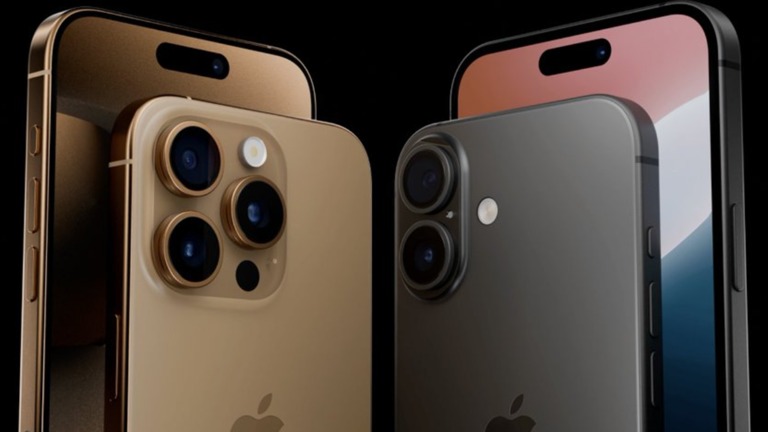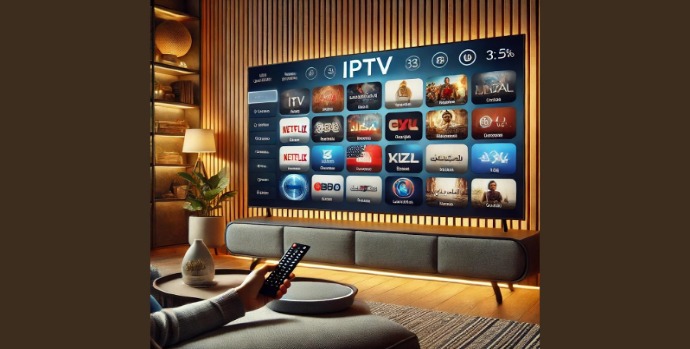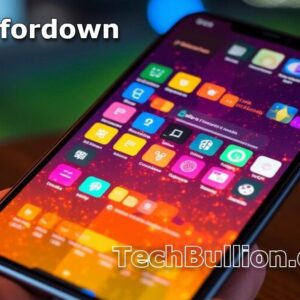Imagine standing in front of a vast ocean of apps, each one promising to enhance your daily life in some way. From productivity boosters to entertainment wonders, the choices are endless. But how do you select the perfect ones? Let’s dive deep into Appfordown, where we’ll not only discover the best app recommendations but also explore how they can fit seamlessly into your lifestyle.
Understanding Your Needs: The First Step to Choosing Apps
Are you overwhelmed by the endless options for apps? You’re not alone. Choosing the right apps can boost your productivity, enhance entertainment, or even strengthen your social connections. But how do you make the right choice? It all starts with understanding your needs.
1. Identify Your Primary Goals
What do you want from your apps? Is it productivity for work? Maybe you seek entertainment for leisure time, or perhaps you want to keep in touch with friends through social networking. Your goals can guide your choices effectively.
2. Consider Your Usage Habits
Think about how often you use apps. Do you check your phone every few minutes or only during your breaks? Understanding your engagement can help you decide which types of apps will be most beneficial.
3. Evaluate Your Current Applications
Look at the apps you already have. What gaps do you see? Are they too slow, lacking in features, or not user-friendly? By pinpointing what’s missing in your current selections, you can narrow down your options.
4. What Features Matter Most?
Ask yourself this: what features are non-negotiable? Do you need offline access for trips? Or a simple, clean user interface that doesn’t confuse you? Jotting down these essentials can streamline your search.
5. Seek Inspiration from Others
How do your friends choose their apps? Observing similar users can provide valuable insights. You might discover new apps through their recommendations or notice trends in what people find useful.
User needs vary widely. For instance, students may look for educational tools, while parents might seek apps that help manage family activities. Remember, understanding your unique needs will simplify your decision-making process.
“Understanding your own needs is the first step toward making informed app decisions.” – Technology Advisor
Before diving into lists of top apps, pause to reflect on what truly aligns with your lifestyle. Your needs are personal, and focusing on them will lead you to the right choices.
Top App Categories and Recommendations

In today’s digital world, the right applications can make a huge difference in how you manage your time and resources. Are you overwhelmed by choices? You’re not alone! With so many apps available, it’s essential to narrow them down to categories that best fit your needs. Here’s a breakdown of key app categories, along with recommendations to help you find the right tools for your daily life.
1. Productivity Apps
Productivity apps can enhance your organization and time management skills. Tools like Notion and Trello are great for planning projects, creating to-do lists, and setting deadlines. Imagine having all your tasks neatly organized in one place. How much more efficient would you be? These apps allow for customization and collaboration, making them excellent for both individuals and teams.
2. Health and Fitness Apps
Your physical and mental well-being is vital. Health and fitness apps like MyFitnessPal help you track your meals, while Headspace offers guided meditations. Together, they can support a balanced lifestyle. Think about how tracking your progress could motivate you. Wouldn’t it feel empowering to see your advancements visualized?
3. Finance Apps
Managing your finances is not just smart—it’s necessary. Finance apps such as Mint and YNAB (You Need A Budget) help you keep track of your spending and savings. They can guide you in budgeting effectively, saving for your goals, and even investing wisely. Effective financial management can significantly impact your future. Are you ready to take control of your finances?
4. Social Media Apps
In a connected world, social media plays a crucial role. Apps like Instagram and TikTok allow you to engage with friends and share creative content. These platforms not only keep you connected but also empower you to express yourself. Isn’t it fascinating how social media can bridge distances and foster communities?
5. Entertainment Apps
When it’s time to unwind, entertainment apps like Netflix and Spotify are your best friends. Whether watching movies or listening to music, these platforms offer endless relaxation options. Imagine curling up on the sofa, pressing play, and letting your worries fade away. Doesn’t that sound like a perfect evening?
Different users have different priorities. That’s why a well-rounded mix of app types is crucial to explore. Each category serves distinct user needs, ranging from daily task organization to social interaction and entertainment. Remember, “
The right app can transform how you manage your daily tasks and leisure time.
” – App Development Expert.
| Category | Recommended Apps |
| Productivity | Notion, Trello |
| Health and Fitness | MyFitnessPal, Headspace |
| Finance | Mint, YNAB |
| Social Media | Instagram, TikTok |
| Entertainment | Netflix, Spotify |
As you explore these categories, think about your lifestyle and what you want to achieve. The right apps can make your life easier, more organized, and even more enjoyable.
How to Evaluate Appfordown Effectiveness
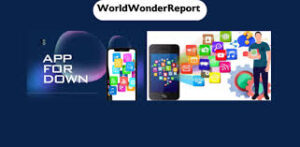
When you’re deciding which app to use, it’s crucial to determine its effectiveness. How can you be sure that an app will meet your needs? Here are some key steps to guide you through the evaluation process.
1. Look for User Reviews
User reviews are invaluable. They provide insight into what real users are experiencing. Have they found the app useful? Or have they encountered issues? Reading multiple reviews helps you form a balanced view. But remember, not all reviews are created equal. Some might be paid or biased. So, look for reviews on trusted platforms.
2. Test Functionality
Many apps offer free trials or demo versions. Why not take advantage of this? Testing the app firsthand lets you experience its functionality. Does it perform as advertised? Does it meet your expectations? It’s much better to find out now, rather than later when you’ve committed.
3. Check Update Frequency
Is the app regularly updated? Frequent updates are typically a good sign. They indicate that the developers are actively improving the app. Regular improvements can enhance your overall experience and security. You wouldn’t want to use an app that stagnates!
4. Examine Security Features
Security is non-negotiable. How is your data protected? Are there encryption measures in place? Look for information on how the app handles privacy and security. As a rule of thumb, if an app seems to neglect security, it’s best to steer clear.
5. Evaluate Ease of Use
Does the app have a user-friendly interface? Simple navigation is essential for a positive experience. If the app is complicated or cluttered, it may lead to frustration. Testing the app’s interface can help you decide whether it fits your style.
“App effectiveness should be gauged not just on features but also on user experience and security.” – Cybersecurity Analyst
Overall, evaluating how an app performs beforehand can save you time and frustration. By focusing on user reviews, functionality, updates, security, and ease of use, you’ll make a more informed choice. Choosing an app requires careful evaluation; consider both functionality and security aspects before making a choice. So, what app will you choose today?
The Role of User Reviews in Decision-Making
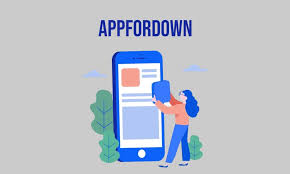
User reviews play a crucial role in your decision-making process when it comes to apps. They offer a perspective that official descriptions often miss. With the right insights, you can choose an app that truly meets your needs.
Understanding Demographics
First off, let’s discuss demographics. Which user group benefits the most from the app? It’s vital to know if the app is designed for tech enthusiasts or casual users like yourself. For instance, an app aimed at gamers may not be the best fit for a busy professional. Wouldn’t it be helpful to know if others like you are satisfied with it?
Analyzing Common Complaints
Next, you should analyze the common complaints found in reviews. What features do users wish for? If multiple users mention that a specific feature is missing, it’s likely a gap worth noting. For example, if an app promises offline functionality but users consistently mention connectivity issues, that’s a red flag. Keep an eye out!
Identifying Highly Rated Apps
Identifying highly rated apps in your interest area can save you time. It’s a shortcut to finding the best options. If you’re looking for a recipe app, check which ones consistently get high ratings. Make sure they align with what you’re after. Remember, not all apps are as good as they claim to be.
Considering Both Positive and Negative Feedback
It’s also essential to consider both positive and negative feedback to gauge overall satisfaction. A five-star rating may look great, but if there are many complaints, that balance is off. Ask yourself: Do the positive reviews address your specific needs? And do the negatives outweigh the positives?
Identifying Trends
Finally, look for trends in the reviews. What themes appear consistently? Do users rave about the user interface, but also mention bugs? Patterns can indicate reliability or issues that may affect your experience. As a UX Designer once said,
“User reviews offer a window into the real-world application of any app, revealing its true strengths and weaknesses.”
Capitalizing on user feedback can lead to smarter app choices that align with your needs. Don’t skip this step! Using reviews can be the difference between a good or bad app experience. So, go ahead, and dive into those reviews!
Creating Your Personal App Library
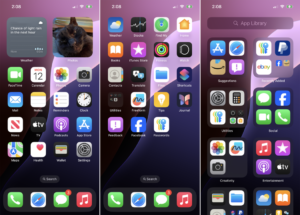
Have you ever scrolled through your smartphone, overwhelmed by the sea of apps? It’s common for people to download countless apps, only to forget about many of them. The solution? Creating a personal app library that not only organizes your digital tools but also reflects your unique interests and needs.
1. Curate Your Collection
Start by collecting apps that truly resonate with you. Think about your hobbies, work, and daily tasks. Not every app out there is suited for you. A curated selection means choosing only the ones that enhance your life. Maybe you love photography? Find apps that help you edit and share your photos. If you’re into fitness, seek out the best workout trackers. This approach makes your app library feel personal.
2. Organize by Function
Once you have your collection, it’s time to organize. Place apps into folders based on their function. For instance, create folders for productivity, entertainment, and social media. This simplifies use drastically. Instead of searching through dozens of icons, you’ll find what you need in seconds. An organized library keeps your mind clear.
3. Embrace Flexibility
Don’t forget to maintain *flexibility*. It’s completely okay to uninstall apps that no longer serve you. Think of your app library as a living space. If something becomes cluttered or outdated, it’s time to let it go. This will clear your mental space, allowing you to focus on what matters.
4. Stay Updated
Your interests may change, and so should your app selection. Revisit your library periodically. Are there new apps that could benefit you? Would dropping a rarely used app open up space for something more useful? Keeping your collection fresh is key to staying efficient.
5. Share with Friends
Finally, don’t hesitate to share your library with friends. They can offer insights or tips on app choices you might not have considered. It’s always helpful to get a second opinion. Who knows? You might discover a hidden gem that fits perfectly into your lifestyle. As a personal organizer said,
“An organized app library reflects not only your preferences but also your lifestyle.”
A little feedback can make your app library even better.
In the end, your final lineup of chosen apps should serve you best and enhance daily productivity. Remember, crafting a personal app library is not just about function; it’s about how well it aligns with your evolving self.
Future Trends in App Development
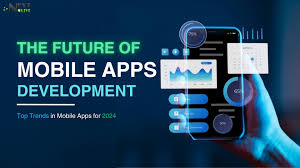
Understanding the future of app development is essential for anyone keeping an eye on the digital landscape. By focusing on emerging trends, you can anticipate what apps will serve you best. It’s not just about following the latest fads; it’s about smart choices for your app library. Let’s dive into some exciting developments.
1. Emergence of AI-Driven Apps
Imagine talking to an app and it understands you. Sounds futuristic, right? But it’s here. AI-driven apps are becoming the standard for smarter user interactions. They learn from your habits and preferences. Whether it’s a personal assistant or a fitness tracker, these apps can tailor experiences just for you.
2. Healthcare Apps with Personalized Care
Think about your health for a moment. In recent years, healthcare apps have shifted from general advice to personalized care. These apps now focus on real-time tracking of your health metrics, like heart rates or oxygen levels. They provide tailored advice, making healthcare accessible and individualized. This personalization can lead to better health management.
3. Increased Privacy Measures
Privacy is a big deal today, right? With regulations like GDPR, app developers are adjusting how they handle personal data. Increased privacy measures will shape the next wave of app development. Users will demand more transparency about how their data is used. This could mean more control over what you share and how long it’s stored. Are you ready for that kind of empowerment?
4. Trends Toward Sustainability
Have you considered the environment when choosing your apps? More developers are focusing on sustainability in their operations. This could range from energy-efficient coding practices to selecting eco-friendly hosting services. You can think of it as choosing apps that align with your values. Wouldn’t you want your app choices to reflect your commitment to the planet?
5. Potential of Augmented Reality Applications
Augmented reality (AR) isn’t just for gaming anymore. It’s transforming shopping experiences, education, and even remote work. Picture trying on clothes virtually or learning complex topics through interactive simulations. The possibilities are endless! AR apps can enhance your user experience, making it more engaging and informative.
“The future of app development lies in personalization and user engagement at unprecedented levels.” – App Development Analyst
In summary, staying aware of these trends can inform your choices today. You will be better prepared for the future as these technologies continue to unfold. So, which segments of app development excite you the most? Keep these trends in mind as they will play a crucial role in shaping your digital experience.
Conclusion: Curating Your Ideal App Experience
In today’s fast-paced world, our needs and desires change constantly. Have you taken a moment to reflect on your own? Consider how your lifestyle impacts the apps you choose. Are your apps still meeting your expectations? Or are they just taking up valuable space on your device?
It’s essential to revisit your personal app library regularly. Over time, you may download apps that no longer serve a purpose. Sometimes, an app that seemed useful initially fades into the background. By assessing your library, you open the door for necessary adjustments that align with your current needs.
Engaging with the Community
Don’t underestimate the power of discussions. Connecting with fellow users can lead to discovering new app suggestions that you might have overlooked. Whether through forums or social media, engaging with a community can enrich your experience. You never know—someone may have insights that exactly resonate with what you seek!
Balancing Functionality and Enjoyment
Think about this: apps should enhance your life, not complicate it. Strive for a balance between functionality and enjoyment. Do you enjoy using your apps? Or do they feel more like chores? Aim for a library that not only serves practical purposes but also brings joy and satisfaction.
Stay Dynamic
The tech world is ever-evolving. As you experiment with new arrivals in app stores, don’t hesitate to keep your selection dynamic. What may have been the best app last month may not serve you well today. Flexibility is key. Regularly incorporating fresh apps can keep your experience engaging and relevant.
In conclusion, finding the right equilibrium in your curated app library will ultimately reflect your unique lifestyle and needs. Regular reflection and adjustment ensure your app experience remains enriching. Remember, apps should adapt to lifetime changes rather than hinder them. By investing some time into refining your collection, you’re investing in making your everyday tasks more enjoyable and efficient.


